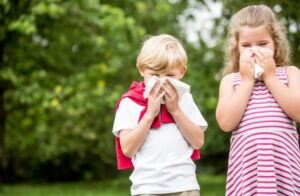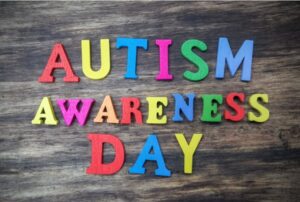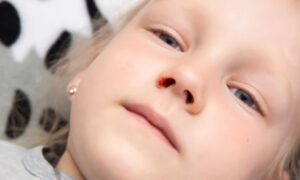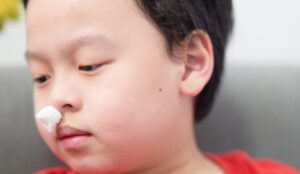Acute Stress Disorder (ASD) is a short-term psychological reaction triggered by severe traumatic events. It typically occurs within minutes to days after the traumatic event, with symptoms lasting no longer than a month. Traumatic events may include natural disasters, car accidents, domestic violence, abuse, sudden death of a loved one, or other terrifying experiences. If left untreated, ASD in children can develop into more severe Post-Traumatic Stress Disorder (PTSD). Therefore, early identification and intervention are crucial to help children overcome the trauma and restore their mental health.
Symptoms of Acute Stress Disorder in Children
The symptoms of ASD in children are similar to those in adults, but they may manifest in specific ways in children. The key symptoms of ASD in children include:
- Emotional Numbness: After the trauma, children may exhibit emotional numbness, an inability to feel normal emotions, or a loss of interest in their surroundings. This is a common stress response where the child temporarily "shuts down" their emotions to protect themselves from the impact of traumatic memories.
- Avoidance Behavior: Children may consciously avoid things, places, or people associated with the traumatic event, such as refusing to visit the place where the trauma occurred or avoiding discussions related to the event.
- Re-experiencing the Trauma: Children may repeatedly relive the traumatic event, sometimes even in their dreams. They may also experience "flashbacks" during the day, where it feels as though the traumatic event is happening all over again.
- Anxiety and Hypervigilance: Traumatized children often display anxiety and restlessness, becoming easily startled and hypervigilant. They may overreact to minor stimuli in their environment and find it hard to relax.
- Sleep Problems: Many children with ASD experience sleep disturbances, including difficulty falling asleep, restless sleep, nightmares, and waking up during the night.
- Dissociative Symptoms: Some children may exhibit dissociative reactions, including feeling detached from reality or experiencing short-term memory loss. This response allows them to temporarily "escape" traumatic memories and avoid facing their inner pain.
Diagnosing Acute Stress Disorder in Children
Diagnosing ASD in children requires a thorough mental health evaluation by a professional. The diagnosis typically involves:
- Assessment of Trauma History: Medical professionals will inquire about whether the child has experienced a traumatic event and their response to it.
- Behavioral Observation: Observing the child’s behavior, emotional reactions, and physical symptoms to determine if they match the profile of acute stress disorder.
- Parental or Teacher Reports: Gathering reports from parents or teachers about changes in the child's behavior at home or school, assessing how the trauma has impacted the child’s life.
It's important to note that ASD symptoms last no more than one month. If symptoms persist beyond this period, it may indicate the development of Post-Traumatic Stress Disorder (PTSD).
Treatment for Acute Stress Disorder in Children
Psychotherapy is the primary approach to treating ASD in children, focusing on helping them process the trauma and regain mental well-being. Common treatment methods include:
- Cognitive Behavioral Therapy (CBT): One of the most effective treatments, CBT helps children identify negative thought patterns and change their thoughts and behaviors to reduce the impact of trauma. It teaches children how to cope with anxiety, fear, and avoidance behaviors.
- Trauma-Focused Cognitive Behavioral Therapy (TF-CBT): A specialized form of therapy for trauma, TF-CBT gradually helps children narrate and process the traumatic event while reframing negative emotions and thoughts associated with the trauma.
- Play Therapy: For younger children, play therapy is an effective way for them to express and process their emotions and traumatic experiences through play.
- Eye Movement Desensitization and Reprocessing (EMDR): This therapy involves guiding the child through eye movements to help them process and reduce the intensity of traumatic memories.
Family and School Support
- Family Intervention: Family plays a crucial role in the recovery process for children with ASD. Parents and other family members need to understand the child's emotional responses and provide care and support. Creating a safe, nurturing environment can help children feel loved and protected.
- School Support: Schools should offer emotional support to affected children. Teachers and school counselors should monitor the child's behavior at school, provide emotional support, and work with parents and mental health professionals to ensure the child receives comprehensive care.
Medication
In some cases, doctors may recommend medication to help alleviate severe symptoms of ASD in children, especially when anxiety, insomnia, or other emotional reactions are significantly impacting daily life. Common medications include anti-anxiety drugs and short-term sleep aids. However, medication is usually a supplementary treatment and should be combined with psychotherapy.
Prevention and Early Intervention of ASD
Although traumatic events cannot always be avoided, early intervention and effective family support can help mitigate the effects of ASD and prevent it from developing into long-term PTSD. Preventive measures include:
- Early Recognition of Trauma Responses: If a child has experienced a traumatic event, parents and teachers should closely monitor any changes in the child’s emotions and behavior and seek professional help early on.
- Establishing a Sense of Security: Providing a safe, stable living environment can increase the child’s sense of security and reduce the uncertainty and fear brought about by trauma.
- Encouraging Emotional Expression: Encourage children to express their emotions through speech, drawing, or play to help them release internal stress and anxiety.
Acute Stress Disorder in children is a short-term psychological reaction to trauma, which can have long-lasting effects on their mental health if not addressed. Through early intervention, psychotherapy, family support, and school involvement, children can recover from trauma and regain mental stability. Parents, teachers, and mental health professionals should work together to ensure children receive the care and attention they need to overcome psychological crises following trauma.
Reference:
National Institute of Mental Health (NIMH) - Provides detailed information about acute stress disorder, including symptoms and treatment.
NIMH: Acute Stress Disorder
American Psychological Association (APA) - Offers resources and articles related to stress disorders in children, including treatment strategies.
APA: Understanding Acute Stress Disorder
Substance Abuse and Mental Health Services Administration (SAMHSA) - Discusses trauma and its impact on children, including ASD and support resources.
SAMHSA: Trauma-Informed Care
Child Mind Institute - Provides insights into ASD in children, symptoms, and effective treatments.
Child Mind Institute: Acute Stress Disorder
National Child Traumatic Stress Network (NCTSN) - Offers resources specifically focused on childhood trauma, including ASD.
NCTSN: Acute Stress Disorder













